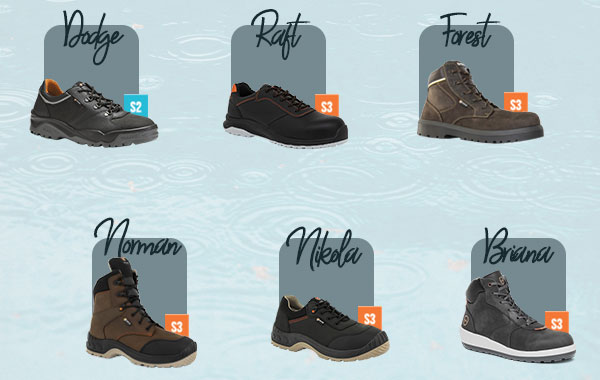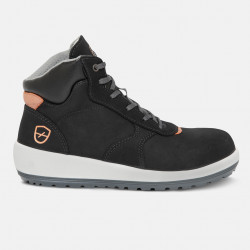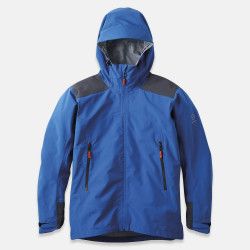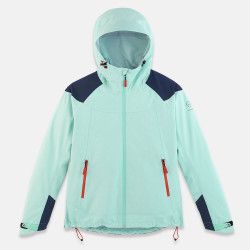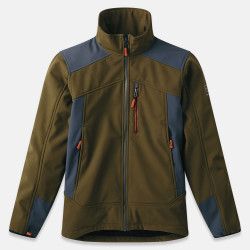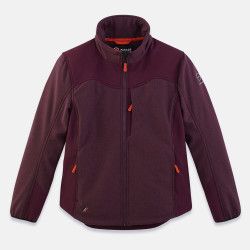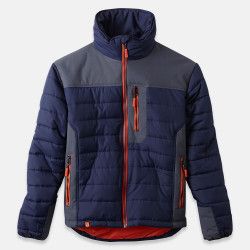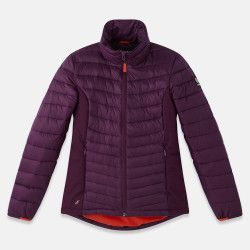Practical advice & expertise
WATERPROOF OR WATER-REPELLENT SAFETY SHOES. WHAT IS THE DIFFERENCE?
The weather is cloudy, increasingly rainy and windy and the same question keeps coming up. What should I wear so I don't end up with soaking wet feet at the end of the day?
Waterproof, impermeable, water-repellent, water-resistant... These terms are not always very clear and on top of that, they have different meanings! That's why, in this article, Parade Protection will explain the definitions of each of these terms. We will then look at the additional WRU label. Finally, we have a selection of safety shoes and workwear to keep you dry.

1. Term definition
The term water-repellent
is used to describe the characteristic of products that repel water once a durable water repellent (DWR) treatment has been applied to the surface of a fabric. DWR stands for "Durable Water Repellent" and is a special chemical that, when applied, creates a barrier, also known as a membrane, that resists water penetration. A product labelled "water-repellent" means that it is hydrophobic, or repels water on contact. In other words, once a liquid hits the surface of the fabric, depending on the angle of impact and the surface area covered, the water is repelled.
Note that a water-repellent product can also be described as water-resistant: the fabric allows water to slide off the surface without absorbing it.
Water resistance
Water resistance refers to a treatment and not an intrinsic quality of the fabric. The water-resistant treatment allows water to slide off the surface of the fabric in droplets without penetrating it: it therefore repels water from the fabric.
Let's take the example of a plant: when a drop of water lands on a leaf, the drop slides down it. That's what water resistance is all about.
Water resistance measures the water pressure a material can withstand before water starts to penetrate.
The advantages of water resistance: it protects against fine rain (drizzle), but allows air to circulate, making it particularly breathable. What's more, it doesn't generate excessive heat, so it provides greater comfort.
It also has its limitations, as it cannot cope with large quantities of water. And the water-resistant finish is not permanent and diminishes over time, so it may be necessary to reactivate it with suitable products.
SPRAY TEST or WET RESISTANCE
To ensure a product's water resistance, the fabric will be assessed according to the Spray test or Wet resistance. A sample fabric is placed under a jet of water imitating rain. From the moment the water stops running off and starts soaking into the fabric, we can deduce its level of resistance to rain.
By calculating its water resistance, this test ensures that the fabric will not become heavy as a result of excess water, and that the product (clothing or shoe) will remain light to wear.

The impermeability
of a fabric is its ability to stop the passage of fluid through the fibre, thus preventing the penetration of water. The term impermeable refers to the fact that the fabric resists the penetration of water continuously, i.e. if it is exposed to or remains in contact with water for a certain length of time. Any product described as "impermeable" must provide a high level of protection against water, even in difficult conditions.
For a product to be totally impermeable, its material and finish must ensure total insulation. For example: waterproof zips, heat-sealed waterproof seams and flaps also act as a barrier against the rain, keeping you dry!
The more impermeable a product’s fabric is, the less breathable it will be. Impermeability is not just about liquids and water, in this case. An impermeable item can also be windproof, insulating you from the elements and preventing you from catching cold in gusts of wind.
IMPERMEABILITY TESTS
The test involves placing a fabric under a column of water contained in a cylinder 10 cm in diameter. The fabric is then in contact with water under pressure. The water cylinder is slowly filled with water. The stopwatch starts. It is stopped when a third drop of water penetrates inside and can be seen. The value is set at the moment of penetration. This time is then converted into pressure and given in mm, the measurement is called the Schmerber score.
The higher the Schmerber score, the more impermeable the fabric. Above 8,000 mm, the fabric is considered impermeable. If the level of protection against water is less than 8,000 mm, the fabric cannot be associated with the term "impermeable". The terms water-repellent or water-resistant can be used.

The term waterproof
means that a material does not allow any fluid to pass through it. The level of waterproofing determines the ability to resist water penetration and is measured in water columns.
The disadvantage of waterproof materials is that they are airtight and therefore not very breathable. Although waterproofing allows you to stay dry, it does not allow water vapour to escape.
These different terms (water-repellent, water-resistant, impermeable and waterproof) characterise the different levels of water resistance of the materials used in a product (safety shoes or workwear).
Once you know this, you need to choose a product that best suits your working environment and your water protection needs.
2. What about standards and additional requirements for safety footwear?
LWRU stands for "water-repellent upper". The part of the shoe that covers the foot is called the "upper". As a result, this additional label (WRU) certifies that only the upper material of the safety shoe is water-repellent; the seams and lining are not mentioned.
The test for WRU is carried out on a sample of the shoe's upper materials. This sample is partially immersed for 60 minutes. Once the test is complete, the mass of water that has passed through the material sample is analysed. The WRU is validated if the material absorbs less than 30% of the quantity of water with which it has been in contact.
Therefore, in addition to basic requirements, S2 and S3 safety footwear must obtain this additional WRU label to be suitable for wet working environments. For more information on safety standards, please read our article "EXPLANATION OF SAFETY STANDARDS".
For example, S2 and S3 safety shoes are water-repellent (partial resistance of the material to water penetration), not impermeable or waterproof! They are suitable for damp environments and are resistant in contact with "light" water such as rain showers, light rain or snowflakes. They are therefore not designed to withstand heavy exposure to water.
If these S2 and S3 safety shoes are still not sufficient for your work environment where there is a high level of humidity, you will need to opt for safety shoes with the additional WR “water resistant” label. This certifies that the entire safety shoe is resistant to water penetration, often because of a membrane inside the shoes. This doesn't mean that this safety footwear is waterproof!
The WR test is called the "bin test" and is carried out on the entire safety shoe:
-the shoes are worn for 15 minutes by a person taking 500 steps in 30 mm of water.
-the shoes are fitted with a dynamic last that simulates walking and are immersed for 80 minutes in a tub of water
The WR is confirmed when the water penetration inside the shoe does not exceed 3cm².
Check out the first totally waterproof safety shoe from PARADE: NAGARA. Specially designed for construction, gardening and industry, these boots feature a pull-up leather upper lined with a water-resistant WR STAY DRY membrane and an adhesive tape system to seal the inner seams. The tongue has a gusset to avoid soil or water getting into the shoe. From the NEBRASKA range, these S7S safety boots meet the basic requirements of the new EN ISO 20345: 2022 standard.
With these explanations, there's no excuse for confusing WRU and WR!
What's more, if you're looking for your PPE to be totally waterproof, you'll need to choose safety boots made entirely of rubber or polymer with the "S4" or "S5" label.
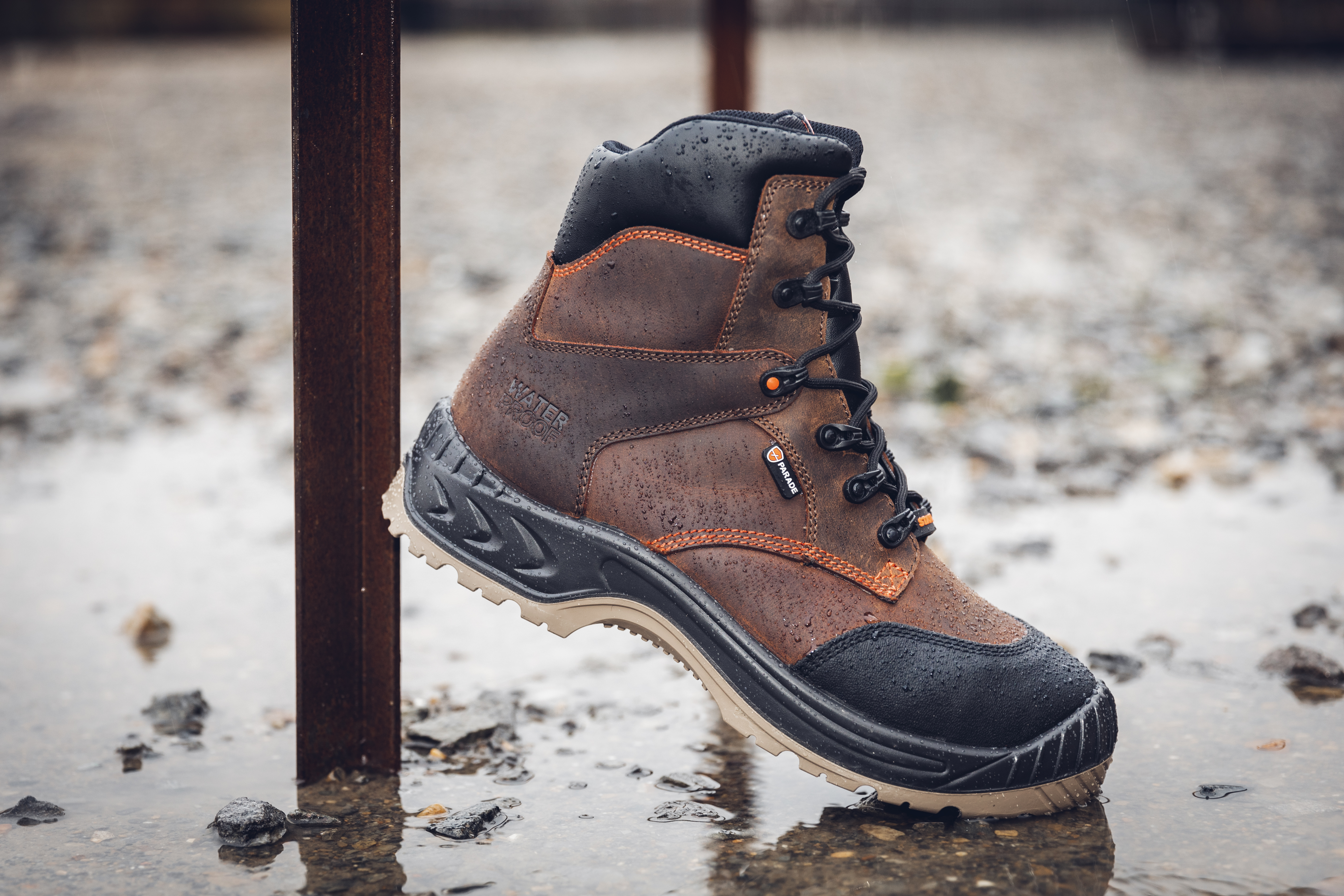
3. Selection of workwear
To protect you from the elements, you will see below a selection of Parade Protection safety clothing:
ONESTI and ONEIDA are waterproof jackets. These products have a water resistance of 10,000 Schmerber.
OSTROV and OSTRA are waterproof Soft Shell jackets. These products have a waterproof rating of 8,000 Schmerber.
OBERA and OCALA are water-resistant down jackets.
Use this advice to choose the product best suited to your needs!

Related products
DISCOVER OUR NEWSLETTER
By entering your email address, you will receive our newsletter with our latest products, services, news and advice on prevention and safety.

